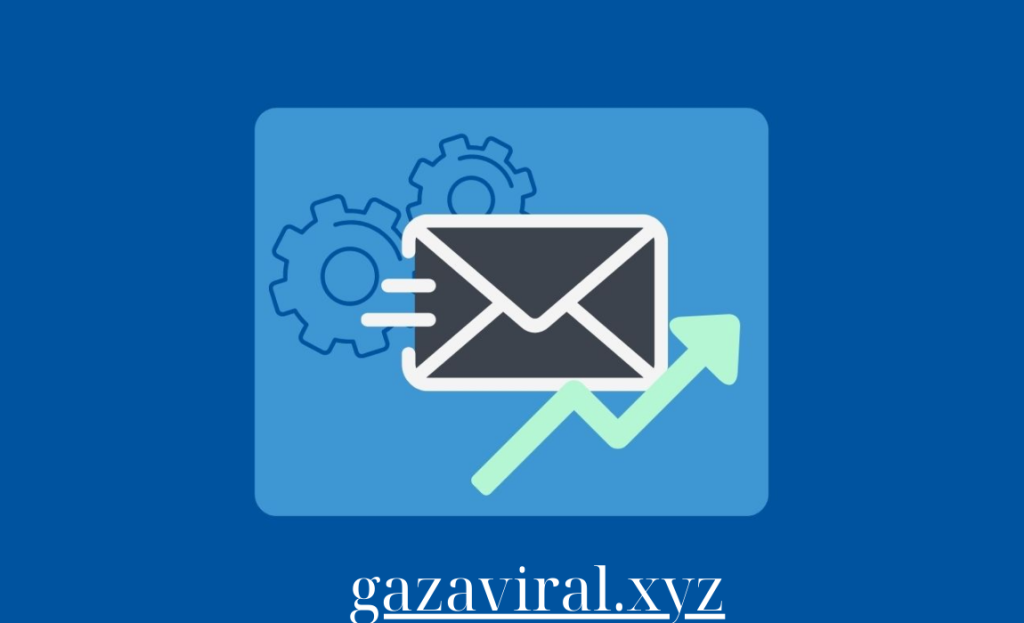Email Automation
Setting Up Email Automation Workflows: A Complete Guide for Beginners
Email automation is a powerful tool that allows businesses to send personalized and timely messages to their subscribers without manual intervention. Setting up email automation workflows can help you engage with your audience, nurture leads, and drive conversions in a more efficient manner. If you’re new to email automation, this guide will walk you through the essential steps to get started.
What is an Email Automation Workflow?
An email automation workflow is a sequence of pre-defined emails that are automatically triggered by specific actions or conditions (such as signing up for a newsletter or abandoning a shopping cart). These workflows help streamline your email marketing and ensure that your subscribers receive the right message at the right time.
Why Use Email Automation?
- Time-Saving: Automating your emails frees up time to focus on other tasks.
- Consistency: Ensure timely and consistent communication with your audience.
- Personalization: Deliver highly relevant content based on user actions or preferences.
- Increased Engagement: Automated emails have higher open and click-through rates compared to one-off email blasts.
Steps to Set Up Email Automation Workflows
1. Choose an Email Marketing Platform
Before setting up email automation, you’ll need an email marketing platform that supports automated workflows. Some of the most popular platforms include:
- Mailchimp
- ActiveCampaign
- HubSpot
- ConvertKit
- Klaviyo
- GetResponse
Each platform has its unique features and user interface, but they all provide email automation capabilities.
2. Define Your Email Automation Goals
Start by determining what you want to achieve with your email automation. Some common goals include:
- Welcoming New Subscribers: Sending a series of welcome emails to introduce your brand and offerings.
- Lead Nurturing: Educating leads through a sequence of emails that move them closer to making a purchase.
- Cart Abandonment Recovery: Reminding customers to complete their purchase after abandoning a shopping cart.
- Customer Retention: Sending follow-up or re-engagement emails to inactive customers.
By identifying your goals, you can create focused and effective workflows that meet specific objectives.
3. Create a List of Triggers
A trigger is the action that initiates the email automation workflow. Common triggers include:
- Subscriber Signup: When a user subscribes to your email list.
- Form Submission: When a user fills out a lead generation or inquiry form.
- Cart Abandonment: When a customer adds products to their cart but doesn’t complete the purchase.
- Website Interaction: When a user visits specific pages or performs actions on your website.
- Purchase Confirmation: When a customer completes a purchase.
Make sure to choose triggers that align with your goals and the actions you want users to take.
4. Plan Your Email Sequence
Once you’ve chosen a trigger, plan out the series of emails that will follow. Your sequence should guide the recipient toward a desired outcome (e.g., making a purchase, downloading a resource, or signing up for a demo). Here’s an example of a basic email sequence:
- Welcome Series (Triggered by a new subscription):
- Email 1 (Day 0): Welcome email introducing your brand.
- Email 2 (Day 3): Highlight your top-selling products or most popular content.
- Email 3 (Day 7): Offer a discount or special promotion to encourage the first purchase.
- Abandoned Cart Series (Triggered by cart abandonment):
- Email 1 (Hour 1): Reminder to complete the purchase.
- Email 2 (Day 1): Offer an incentive (such as free shipping or a discount).
- Email 3 (Day 3): Create urgency (e.g., “Items are selling out fast!”).
5. Craft Engaging Email Content
Your email content should be concise, relevant, and focused on delivering value. Here are a few tips to keep in mind:
- Personalize the Message: Use the recipient’s name and other relevant data (e.g., past purchases or browsing behavior).
- Clear and Compelling Subject Line: Create subject lines that grab attention and encourage the user to open the email.
- Call-to-Action (CTA): Include a clear and enticing CTA that prompts the user to take the next step (e.g., “Shop Now,” “Claim Your Discount,” or “Read More”).
- Consistent Branding: Ensure your email design reflects your brand’s visual identity with consistent fonts, colors, and logos.
6. Set Time Delays Between Emails
The timing of your emails is crucial for maintaining engagement without overwhelming your subscribers. Most email automation tools allow you to schedule delays between each email in the sequence. Here’s an example of how you might structure a timing sequence:
- Welcome Series: Send the first email immediately upon signup, the second email 2-3 days later, and the final email after a week.
- Abandoned Cart Series: Send the first email 1 hour after the cart is abandoned, a second email 24 hours later, and a third email after 48 hours.
Experiment with different delays to find the optimal frequency for your audience.
7. Test Your Workflow
Before activating your workflow, it’s essential to test it to ensure everything works as expected. Review the following:
- Triggers: Check that the workflow is triggered by the correct action (e.g., signup, cart abandonment).
- Email Content: Ensure the content is personalized and relevant to each recipient.
- Timing: Verify that emails are sent at the right intervals.
- Links and CTAs: Double-check that all links, images, and CTAs are functioning properly.
Most email platforms allow you to send test emails to yourself or preview the workflow to confirm everything is set up correctly.
8. Activate the Workflow
Once you’ve tested and refined your workflow, it’s time to activate it. Most email automation platforms have a simple switch to enable your automation. From there, your emails will automatically be sent based on the triggers you’ve set.
9. Monitor Performance and Optimize
After your workflow is live, regularly monitor its performance to see how well it’s achieving your goals. Key metrics to track include:
- Open Rate: Percentage of recipients who opened your email.
- Click-Through Rate (CTR): Percentage of recipients who clicked on a link in your email.
- Conversion Rate: Percentage of recipients who completed a desired action (e.g., purchase, signup).
- Unsubscribe Rate: Percentage of users who unsubscribed after receiving the email.
Based on your findings, make adjustments to improve the workflow’s performance. For example, you might revise subject lines, update email content, or adjust timing to optimize results.
Popular Types of Email Automation Workflows
- Welcome Series: Onboarding new subscribers or customers with an introduction to your brand.
- Abandoned Cart Emails: Reminding customers to complete their purchase and offering incentives.
- Post-Purchase Follow-Up: Thanking customers for their purchase and offering product recommendations or loyalty rewards.
- Lead Nurturing Sequence: Gradually introducing prospects to your offerings with educational content, case studies, or product demos.
- Re-Engagement Campaigns: Targeting inactive subscribers with offers or incentives to get them back on board.
Conclusion
Setting up email automation workflows is a powerful way to streamline your marketing efforts and nurture your audience with minimal manual effort. By choosing the right email marketing platform, defining your goals, creating engaging content, and continuously optimizing your workflows, you’ll be well on your way to building effective email campaigns that drive engagement and conversions.


